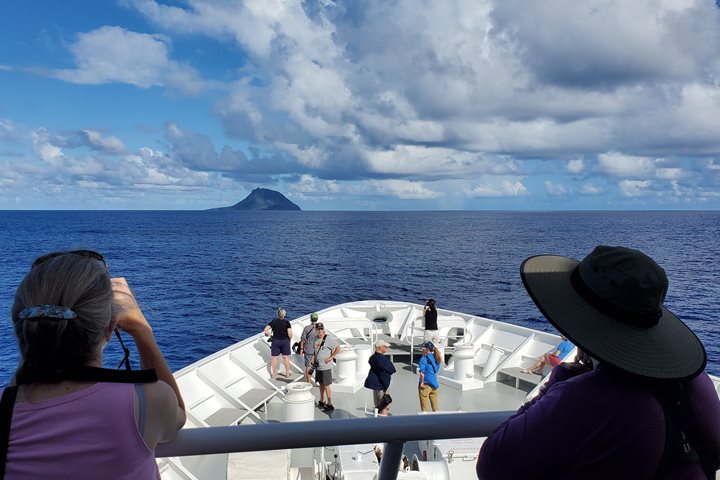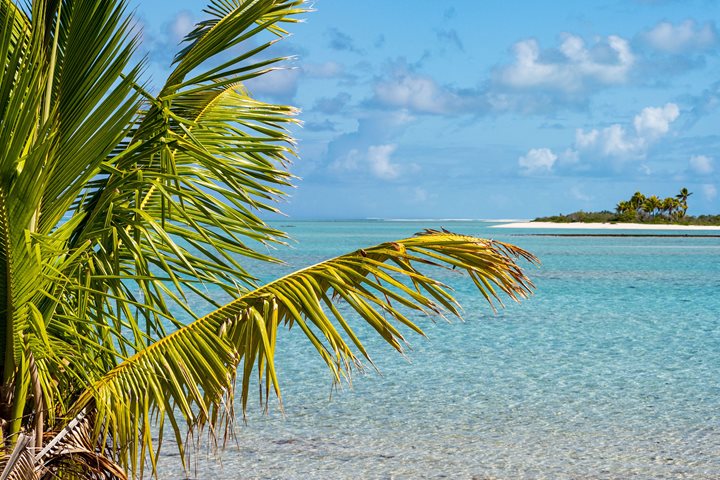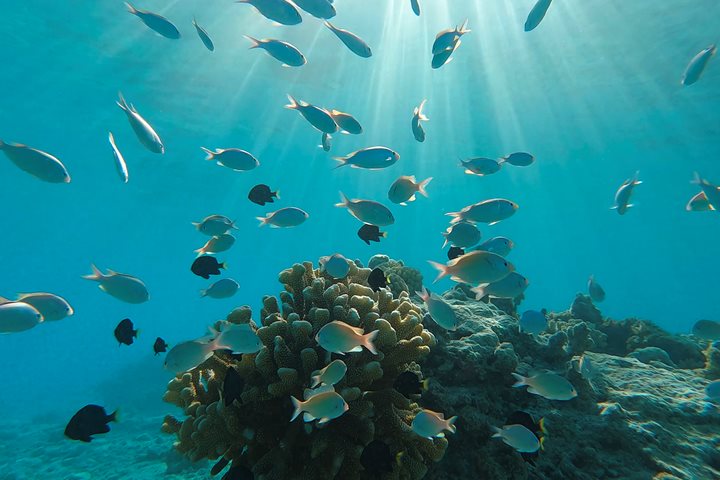After long, arduous travels for many of us who reached the ship yesterday, it was nice to have a relaxing morning at sea to get into the mindset of Polynesian life. We took this time to introduce the guests to the staff members and give briefings about our Zodiac operations, kayak operations, and snorkel operations. Snorkel gear was handed out to those who wanted it.
By late morning we had reached the northwest corner of Apataki Atoll in the Tuamotu Archipelago, and entered the immense lagoon through a very narrow channel. There was little room to spare during our transit and those on deck to witness it were duly impressed. The ship was soon anchored, and we made plans to explore shoreside and find a snorkel site. This was accomplished, and we were all going ashore soon after lunch. At the same time, a number of scuba divers set off to explore the outer reef.
What appeared to be a white sand beach upon landing turned out to be white coral rubble and sea shells tossed up along the shore by wave action. This material is, of course, produced by the breakup of coral in the shallow waters that has been smashed by storm waves over long periods of time. The vegetation is also impressive in that everything we saw is adapted to salt conditions and can grow in coastal regions that occasionally get inundated by sea water. The plant diversity is surprisingly strong and dense. Many of us opted to explore the terrestrial part of the island before snorkeling. It was exciting to find the hidden remains of an ancient marae that none of us knew existed here. It was located on a slightly raised spot, very close to a natural pond that now contains brackish water. The structure is in ruins and is almost completely overgrown by vegetation. Among the permanent denizens of the island we encountered were large land crabs, land hermit crabs, and tiny skinks.
The snorkel site was relatively shallow but exhibited lots of little fish near a protected coral head. A few guests also tried their hands (and feet) at the stand-up paddle boards. All the while, great crested terns, brown noddies, and brown boobies flew back and forth along the coastline. The galley and lounge staff surprised us with a refreshing bar organized in a shady spot near the landing. We all had to return before sunset, so the ship could safely sail back out of the lagoon before dark. Our day finished up with the Captain’s Welcome Dinner, which was followed by a nature documentary about coral reefs.







